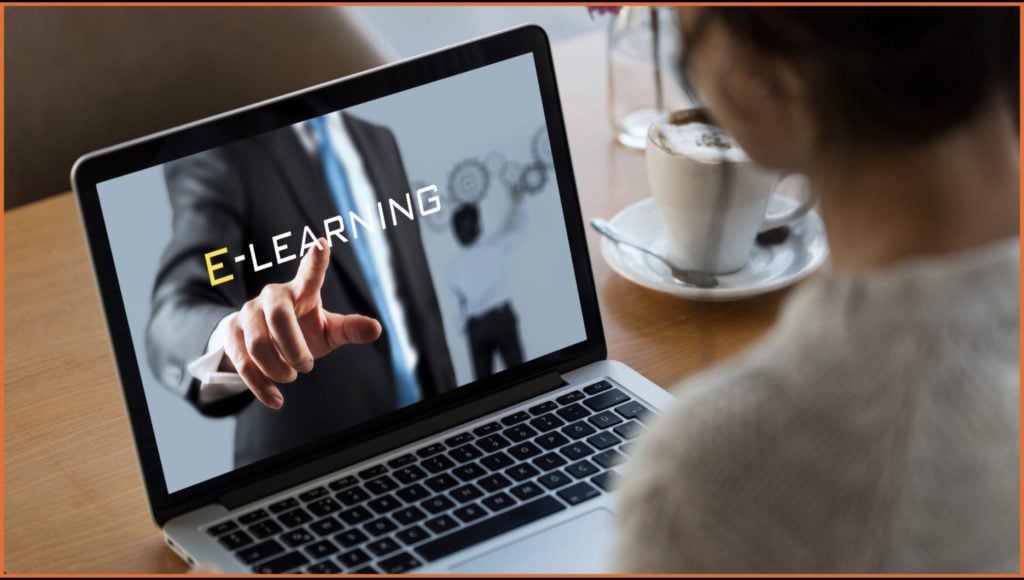A few years ago, in my previous job as a process trainer (for those who are new to the concept, process training is about imparting knowledge and nuances of a process or product) I was struggling to hold the learner’s attention to the topics. I was doom-scrolling the internet to find ways to make serious content more engaging. Of course, I also had to make sure that the content delivery doesn’t lose its impact. I stumbled upon a game called ‘jeopardy.’ It soon turned into the Holy Grail for my training engagement. Years later, now, as I see people using the terms – game-based learning, gamification, microlearning, simulations interchangeably, I though it makes sense to share my two cents with you.
What is game-based-learning (GBL)?
Table of Contents
Along with the engagement aspect, games also have a clear objective, rules, and obstacles. In game based learning modules, learners are required to participate actively in a game based setting. Post the gamified action, a facilitator would debrief the insights observed based on the behaviour displayed by the learners during the game play.
An effective example would be an Escape Room. It is a game in which a group of players are put inside a room ( virtual or otherwise ) with several clues. The players need to piece together information to solve the clues and escape. This game, depending on what the context is, can be debriefed in multiple ways. Some of the messages that commonly derived debrief points include communication, collaboration, risk aversion, managing time, and problem solving.
These learning outcomes are established through the game itself. Sure, this is primarily a game and doesn’t have to be accompanied with a debrief. It can be played just for fun too. If it is played just for fun, it should ideally be referred to as ‘game’.
There are several advantages to using games-based learning. Here are the top 3:
- Immersive experience – The learners are completing immersed in the game
- Authenticity – When playing a game, the learners are their most natural selves. How one plays truly reflects who they are, how they handle stress, how they handle teamwork and accomplishments.
- Safe space – Games provide a safe environment to practice/ experience a new skill or situation and see how one may react.
What is gamification?

Gamification is picking up the mechanics of game and adding them to a non-game environment to enhance the user experience and drive certain behaviors.
Non-game situation can be anything from making sure employees complete an assignment timely, or inculcate healthy habits, or pick up a new skill, or check knowledge retention. The game of Jeopardy that I used in almost every batch of new joiners in my previous organization is an example of a simple gamification using points and leaderboard.
With gamification, the learning outcome is derived using game mechanics, to an otherwise non-game environment so the task becomes fun, engaging and the learners want to do it voluntarily.
There are several advantages to using gamification. Here are the top 3:
- For activities that require a longer intervention, using one game may not drive the learning outcome. This usually requires a behavioural change. Hence, gamification works better in such cases.
- A well gamified environment can address complex subjects with ease.
- Gamification taps into the motivations and hence can drive habit formation.
What is a simulation?
A simulation may or may not look like a game. A simulation is created to replicate the actual environment – be it a scenario in the office or a fire station. If you’ve ever witnessed a fire evacuation drill or an earthquake response, you know what a simulation feels like. For work situations, the attempt is to build a system which closely replicates a work situation, such as swift and accurate delegation of work or understanding decision making process is a high-pressure environment.
There are several advantages to using simulation. Here are the top 3:
- A simulation is the closest it could get (at least for now) to providing a safe space to practice skills.
- Varied outcomes can be explored without any damage in the real world.
- Knowledge retention is far greater because experiencing a simulation is as close as experiencing the situation itself.
What is e-learning?

E-learning is an electronically delivered structured course, typically delivered using a learning management system (LMS). E-learning may be synchronously or asynchronously delivered and typicaly has 4 levels –
- Level 1 (or passive) – linear, non-interactive, read only, with infographics, video and/or text
- Level 2 (partial engagement) – minimal interactions with drag and drop functionality, typically accompanied with video and voice over
- Level 3 (moderate engagement) – Interactive with stories, customized files and animation
- Level 4 (full engagement) – Interactive and immersive, with simulations, gamification, avatars and characters
There are several advantages to using e-learning. Here are the top 3:
- Single knowledge base/ convenient storage – All learning material can be stored is one place, such as the LMS
- Wider coverage – All that is needed is a laptop/ PC /mobile device and internet access, hence adoption is much easier
- Analytics – The progress can be tracked with ease with superior analytics
What is microlearning?
Microlearning is a type of learning & development methodology which focuses on bite sized and goal – oriented content, which learners can easily engage with anytime, anywhere. Microlearning can range for typically 2 to 10 minutes and is designed to easily flow into the learner’s work and life.
There are several advantages to using microlearning. Here are the top 3:
- Combats forgetting curve – It follows ten principle of spaced repetition making retention easier
- Wider coverage – All that is needed is a laptop/ PC /mobile device and internet access, hence adoption is much easier
- Analytics – The progress can be tracked with ease with superior analytics
Conclusion

In conclusion, there is no doubt that these methods are incredibly useful in designing powerful learning outcome. Each of the above methods have their own share of advantages and can be used to spruce up your existing training content. The possibilities are endless. Which of these methods do you find most intriguing?










